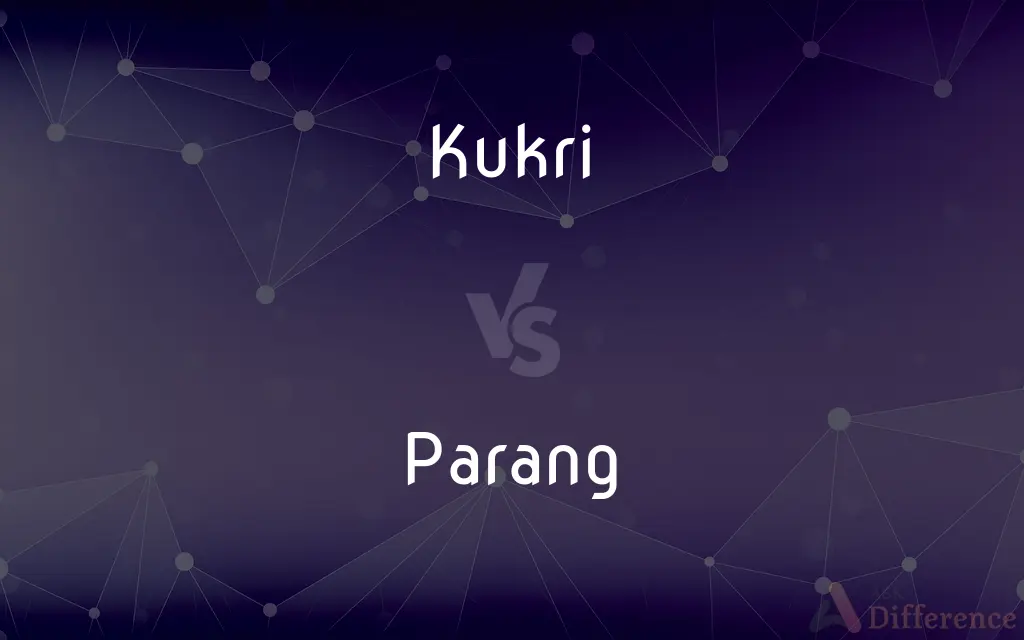Kukri vs. Parang — What's the Difference?

Difference Between Kukri and Parang
ADVERTISEMENT
Compare with Definitions
Kukri
The kukri (English: ) or khukuri (Nepali: खुकुरी, pronounced [kʰukuri]) is a type of machete originating from the Indian subcontinent, and is traditionally associated with the Nepali-speaking Gurkhas of Nepal and India. The knife has a distinct recurve in its blade.
Parang
Parang is a popular folk music originating from Venezuela and Trinidad and Tobago that was brought to Trinidad and Tobago by Venezuelan migrants who were primarily of Amerindian, Spanish, Mestizo, Pardo, Cocoa panyol, and African heritage, something which is strongly reflected in the music itself. The word is derived from two Spanish words: parranda, meaning "a spree”, and parar meaning "to stop".
Kukri
A large knife with a somewhat sickle-shaped blade that is broader near its point than near the hilt, used especially by Gurkha soldiers as a weapon and cutting tool.
Parang
A short, heavy, straight-edged knife used in Malaysia and Indonesia as a tool and weapon.
Kukri
A curved Nepalese knife used especially by Gurkha fighters; many variants exist, but all share recurve as a common theme.
ADVERTISEMENT
Parang
A short, heavy, straight-edged knife used in Malaysia and Indonesia as a tool and weapon.
Parang
A style of music originating from Trinidad and Tobago, strongly influenced by Venezuelan music.
Parang
To cut with a parang
Parang
To play parang music
Parang
A stout strait-edged knife used in Malayasia and Indonesia.
Parang
A stout straight knife used in Malaysia and Indonesia
Share Your Discovery

Previous Comparison
Hades vs. Hell
Next Comparison
Clean vs. Cleaned















































